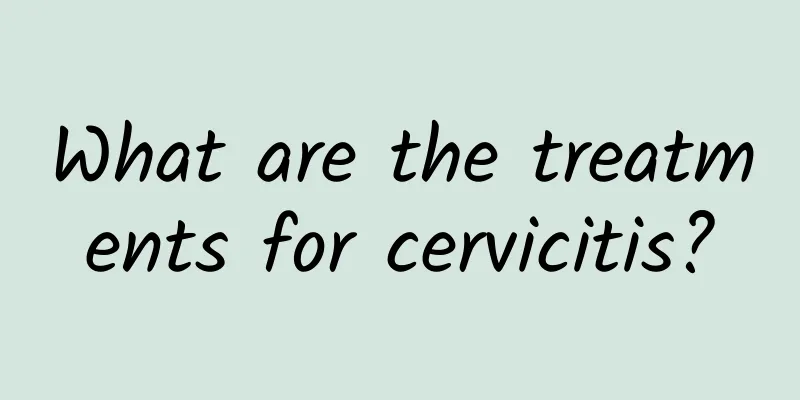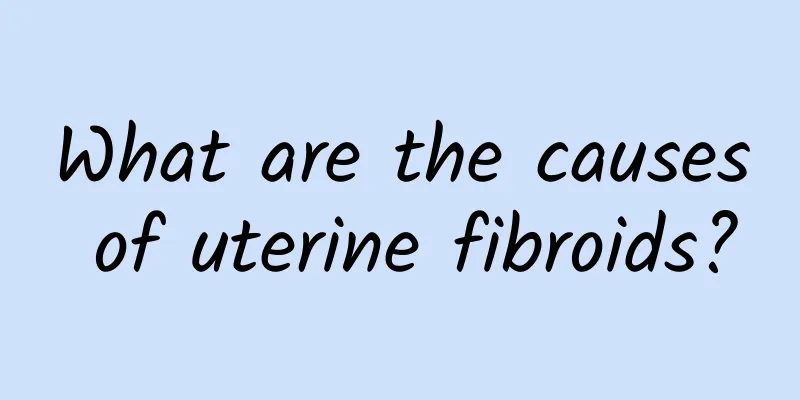What are the treatments for cervicitis?

|
Cervicitis is one of the common gynecological diseases, which can be divided into acute and chronic types, with chronic inflammation being the most common. Acute cervicitis is mainly manifested by redness and swelling of the cervix and edema of the cervical mucosa, often accompanied by acute vaginitis or acute endometritis. Chronic cervicitis has a variety of manifestations, including erosive changes, cervical columnar epithelial ectopia, cervical hypertrophy, cervical polyps, cervical glandular cysts, and cervical ectropion. There are three main treatments for cervicitis: 1. Drug treatment: The main treatment for acute cervicitis is the use of antibiotics, including penicillin, cephalosporin, etc., to eliminate pathogens and relieve inflammatory reactions. For patients with obvious symptoms, such as a large amount of purulent secretions, especially those with high risk factors for sexually transmitted diseases, there is no need to wait for the pathogen test report to come out, and doctors can perform empirical treatment. 2. Physical therapy: For cases with large erosion area and deep inflammatory infiltration, commonly used physical therapies include laser, freezing, infrared coagulation therapy, microwave therapy and electrocautery, etc. These physical therapy methods can destroy the columnar epithelium on the surface of the cervix, causing it to necrotize and fall off, thereby promoting the new squamous epithelium to cover the surface of the cervix. 3. Surgical treatment: For those with deep and wide erosion or those involving the cervical canal, cervical cone resection can be considered. Traditional cervical cone resection causes a lot of bleeding and is now rarely used. High-frequency radio-wave knife Leep knife surgery is now more commonly used, which has the advantages of simple operation and few postoperative complications. The above three methods have their own scope of application and advantages and disadvantages in the treatment of cervicitis. When choosing a treatment method, the doctor will choose the most appropriate treatment plan based on the patient's specific situation. At the same time, patients also need to pay attention to personal hygiene, avoid sexual intercourse and other precautions during treatment to promote recovery. |
<<: Symptoms of pelvic inflammatory disease
>>: How to deal with menstrual cramps
Recommend
Will pelvic effusion cause irregular menstruation? What are the consequences?
Pelvic effusion is mainly caused by inflammation ...
Patients must understand the care methods of vulvar leukoplakia
The appearance of vulvar leukoplakia has seriousl...
What are the harms of abortion to women's health? 6 harms of abortion should not be ignored
The harm of female abortion cannot be ignored 1. ...
The patient's prolonged course of disease will develop into the cause of chronic cervicitis
Among gynecological diseases, chronic cervicitis ...
Will adnexitis be inherited by the next generation?
With the development of the social environment an...
Exercise to lose weight, anaerobic exercise vs. aerobic exercise, which one should you choose? Eat this after exercise to lose weight quickly
Exercise plays an indispensable role in successfu...
When eating Japanese deep-fried pork cutlet, is it necessary to pair it with shredded cabbage? The answer is revealed by the famous Japanese doctor
If you like to eat Japanese fried pork chops, the...
Medical treatments for menopause
We all know that if a woman suffers from menopaus...
Is cervicitis serious?
Cervicitis refers to an inflammatory disease of t...
Analysis of the causes of common ovarian cysts and their relationship with lifestyle
The impact of ovarian cysts on everyone is actual...
The cost of painless abortion is closely related to the choice of surgical method
If you have an unexpected pregnancy, painless abo...
Why do hospitals require hysterectomy for uterine fibroids? Why do doctors say hysterectomy for uterine fibroids?
Why do hospitals require hysterectomy for uterine...
For obese people who want to control their weight, “enjoying thinness” is not a dream! 5 must-eat leptin foods for weight loss
Why do some people never gain weight no matter ho...
Specific symptoms of uterine fibroids What is the best thing to eat if you have uterine fibroids
What are the specific symptoms of uterine fibroid...
Does masturbating too much affect menstruation for girls? What are the dangers?
In fact, in real life, not only male friends will...









